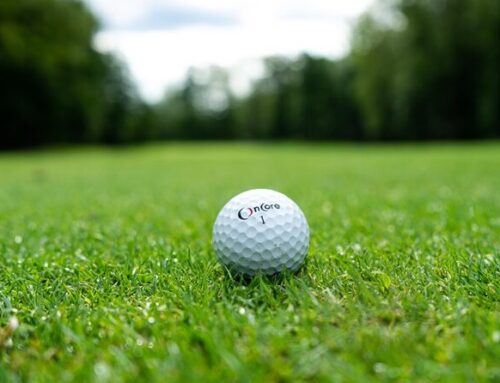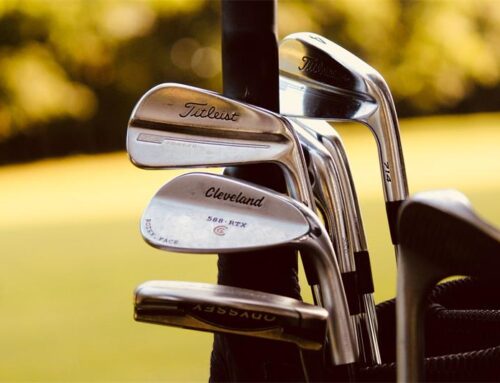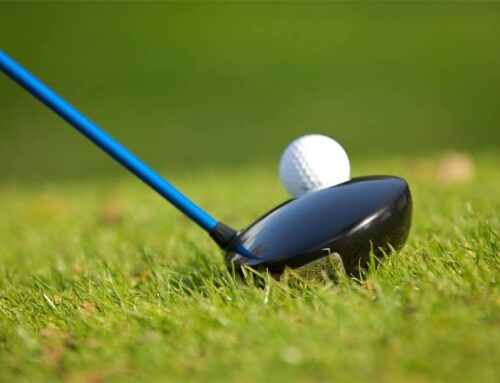Last Updated on December 28, 2023 by
Choosing the right golf clubs is the first step toward learning golf. The first step in learning how to play golf is to choose the right golf clubs. Shorter clubs are easier to hit the sweet spot, but longer clubs are better for distance. Lighter clubs allow faster swings and longer distances, while heavier clubs produce more stable ball trajectories. It’s best to seek professional advice when choosing shafts and consider your swing speed when choosing flex. Come along with me as we learn more about it.
What to look for when choosing a golf club?

Length
There is an old saying that says, “An inch longer, an inch stronger, an inch shorter, an inch clever.” The same principle applies to golf clubs.
Longer clubs are better if you want to pursue distance. Swinging longer clubs generates more centrifugal force, increasing clubhead speed and distance. This should, however, be balanced with swing rhythm and personal preference, as excessively long clubs can decrease effective strikes and make it difficult to hit the sweet spot, leading to slices and hooks.
Shorter clubs are easier to control and improve accuracy. The focus should not solely be on length to achieve greater distance. Accuracy is often more important than distance in many cases. The shorter the club, the easier it is to hit the sweet spot, resulting in more efficient use of distance without wasting it.
Weight
Clubs follow a similar principle when it comes to weight. By using lighter clubs, you will be able to swing faster and achieve greater distances. However, excessively light clubs can cause players to rely too much on arm strength, resulting in insufficient centrifugal force. Overly light clubs may even decrease clubhead speed if they are used for an extended period of time. Furthermore, excessively light clubs can result in unstable swing motions and reduced strike rates.
The ball trajectory is more stable with heavier clubs. If they are too heavy, players tend to grip the club tightly during the backswing, contrary to the fundamental concept of a relaxed swing. Consequently, the maximum swing speed isn’t achieved at impact, resulting in a loss of distance. Consider your own circumstances and swing characteristics when selecting the length and weight of golf clubs. It is fundamental to be able to swing the club easily and naturally.
Flexibility
A golf club’s flexibility, or shaft stiffness, is crucial to trajectory stability and ball distance. Softer shafts allow for greater distance, whereas stiffer shafts provide a more stable trajectory.
In the golf club manufacturing industry, most manufacturers categorize shaft flexibility into five specifications: Ladies (L), Amateurs (A), Regular (R), Stiff (S), and Extra-Stiff (X). Nevertheless, manufacturers have different standards for defining flex. When you determine the regular flex (R-Flex) of one manufacturer, it does not necessarily mean that the regular flex (R-Flex) of other manufacturers will be the same.
Get professional advice
If possible, seek professional advice when making your selection. Furthermore, you can choose a shaft with an appropriate stiffness based on your swing speed. If you have a fast swing speed, you can choose a shaft with greater stiffness, and vice versa.
Choosing the right golf club: 10 top tips
Appearance
It generates further interest for selection when you see a new golf club with appealing colors and shapes.
Feel
In your hand, the club should feel balanced in terms of weight, length, and grip thickness. You should determine the weight of the club based on your own physical condition. Choosing a slightly heavier club will help you achieve greater distance if you have a strong physique. Those with relatively smaller physiques, such as older adults, women, and children, should choose a lighter club. In general, clubs of the same model have similar lengths. A driver, for example, is usually 45 inches long, so there is no need to consider it excessively. Not only should the grip be comfortable, but it should also be thick enough. It is easier to hit a slight fade with a thicker grip because it reduces wrist flexibility. The thinner the grip, the easier it is to hit a slight draw. It is also important to consider the comfort of the grip.
The feel of hitting the ball
Take a few shots with the club you intend to purchase and pay attention to the feeling when the clubhead makes contact with the ball. Many iron clubheads today are made of soft forged steel, which offers an excellent ball-striking feel and is suitable for mid-to-high handicap golfers, ending the era where forged irons were not available for players in those handicap ranges. This is known as “getting a good feel for the ball.”
Sound
When you strike the ball, it should sound pleasing to the ear. Even though sound does not affect the trajectory, distance, or direction of the ball, it does affect your mood. It’s difficult to play well when you’re in a bad mood, and woods are particularly sensitive to sound.
Trajectory
The flight trajectory of the ball is determined by the loft angle of the club and the player’s habitual swing. Clubs from different brands may have slightly different loft angles, even within the same model. The only way to determine if the flight trajectory suits your needs is to try them out personally.
Distance
The flight distance of the ball is influenced by the stiffness of the shaft, the material of the clubface, the weather conditions, the quality of the ball, and the player’s physical fitness. The shaft is the most important factor. The shaft of a golf club is referred to as its “engine.” Powerful players can use an “S” (stiff) flex shaft or an “F” (slightly stiff) flex shaft. “R” (regular) flex shafts can be used by regular players. Women and seniors can use an “L” (soft) flex shaft. You can only achieve the desired distance by choosing the right shaft.
Price
Instead of focusing solely on the brand, consider the “cost-performance ratio”. You should choose the one that is most suitable for you.
Craftsmanship
The packaging should be checked and the plating and inlay work should be refined. The clubhead and shaft should be connected securely, and the alignment aid on the grip should be clear.
Service
See if you receive VIP treatment at the store when you make a purchase, such as complementary gifts or beverages.
After-sales service
Understand how quality issues will be handled, such as returns, repairs, or exchanges. In order to resolve any quality issues with the club properly, it is best to have written commitments.





Leave A Comment